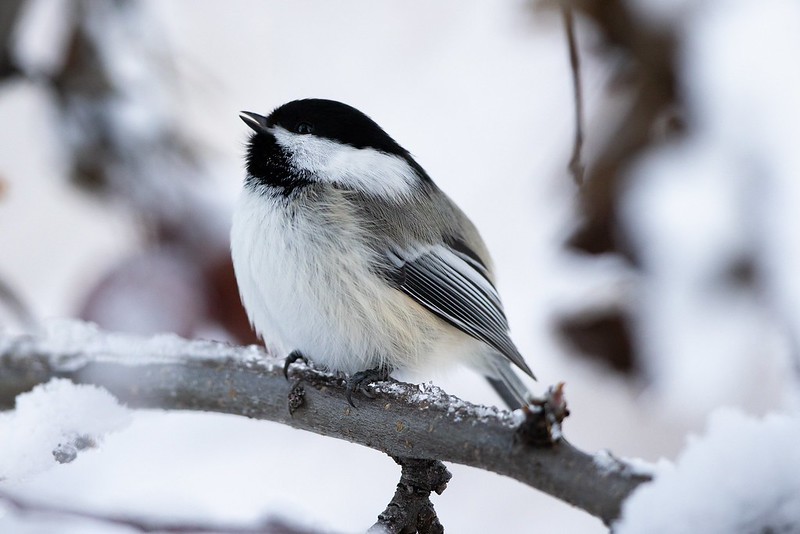Welcome to Creature Feature, a series from the CELT education team highlighting local wildlife. In each entry, we will share a short introduction to a local organism that you might encounter in your backyard or on our trails.
There are so many reasons why I love this time of year. One in particular, though, is the symphony of songbirds that I awake to most every morning. And while I can’t identify every bird that sings to me in the morning, I enjoy it nevertheless!
A songbird has highly developed vocal organs and belongs to the group Passeri of the perching birds. These vocal organs allow this group of birds to produce a very diverse and often elaborate song which they use for communication in a variety of settings. Both males and females will use songs to attract a mate and males will use their songs to defend their territory. They can also use their songs to communicate danger. Some ornithologists even think that birds may also sing simply for the pleasure of it, though more research is needed on that one!
Worldwide, there are more than 5000 known species of songbird, of which Maine is home to just over 100. Songbirds make up roughly a third of Maine’s 292 native or regularly visiting bird species and over a fifth of the 464 total species of bird that have been identified in Maine. Some well-known Maine songbirds include American robins, warblers, phoebes, thrushes, goldfinches, cardinals, ruby-throated hummingbirds, black-capped chickadees, and many, many more. Many of these birds have bright plumage to go with their musical sound, making them easy to find with your eyes or your ears.

The busiest time of year for songbirds is spring when they are attracting mates, building nests, and raising chicks. Many of Maine’s songbirds will have multiple broods, meaning sets of eggs laid, in a season. For example, if the conditions are right and food supplies are good, robins can have up to three successful broods and mourning doves, another songbird, can have up to six! Other species vary in number — thrushes and phoebes might have two, and bluebirds can do no more then four. However, these numbers are a maximum — our Maine summers are usually too short for many species to achieve maximum brood potential, so most species will average around two per year.
Many of Maine’s songbirds occur statewide within their suitable habitat, while others only occur in specific portions of the state. Maine has a very diverse landscape with a myriad of habitats suitable for various bird species. Consequently, Maine’s songbirds, like all of Maines bird species, are each uniquely adapted to exploit their niche with great efficiency. A good example of this is the various beak shapes and designs that songbirds have for getting food. For example, seed eaters such as the Black-capped Chickadee have short, stout, strong beaks perfect for cracking seeds. Insect eaters such as swallows, warblers, and woodpeckers have pointy, tweezer-like beaks perfect for getting into small spaces to grab and hold insects. Hummingbirds have long, needle-like beaks perfectly designed to get nectar out of flowers.
While some species of songbirds are year-round residents, many others undertake long-distance migrations that are truly remarkable, traveling hundreds if not thousands of miles to destinations in Central and South America, while others undertake only short, somewhat irregular seasonal movements. This migration is due to the birds lack of ability to stay warm in the winter and the disappearance of their food supply as the summer season wanes.
Birding watching and backyard bird feedings never been more popular and this is a great time of year to jump in an observe these marvelous creatures up close. To help get you started, here are some great resources for information on songbirds, and birds in general, plus how to get started on your own birdwatching journey:
- https://maineaudubon.org/birding/maine-birding-guide/
- https://www.allaboutbirds.org/news/
- https://www.maine.gov/ifw/fish-wildlife/wildlife/species-information/birds/index.html
